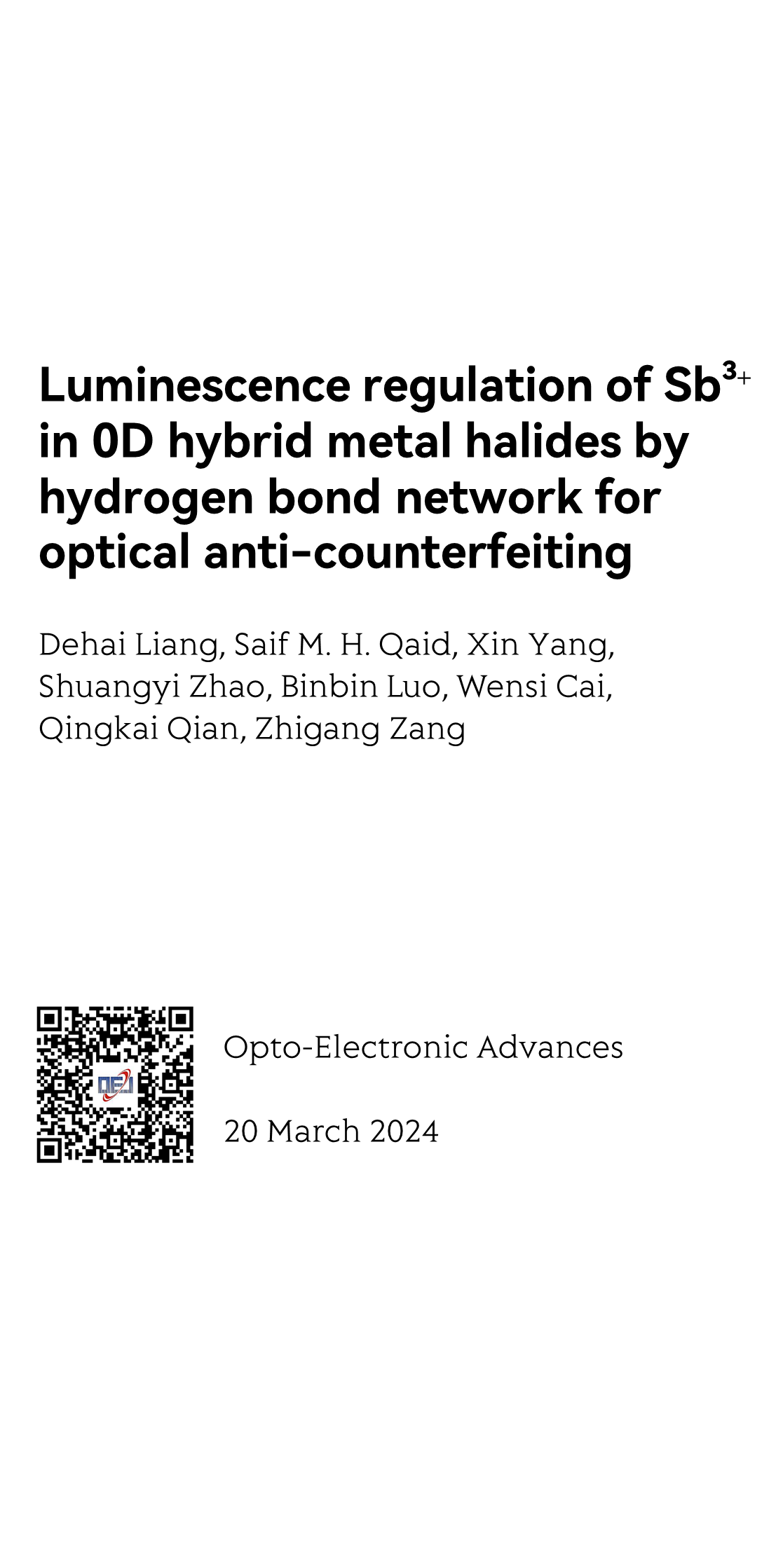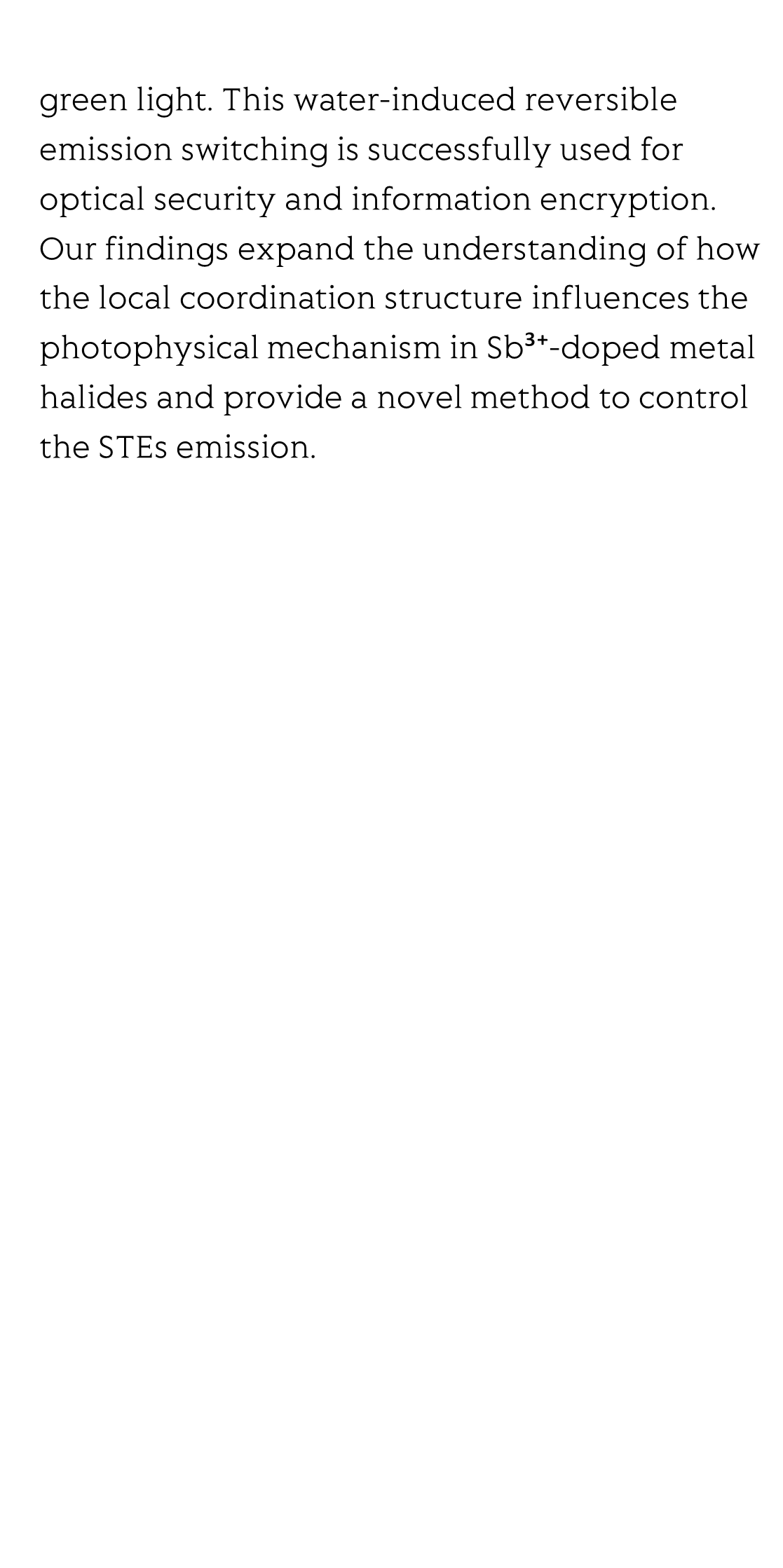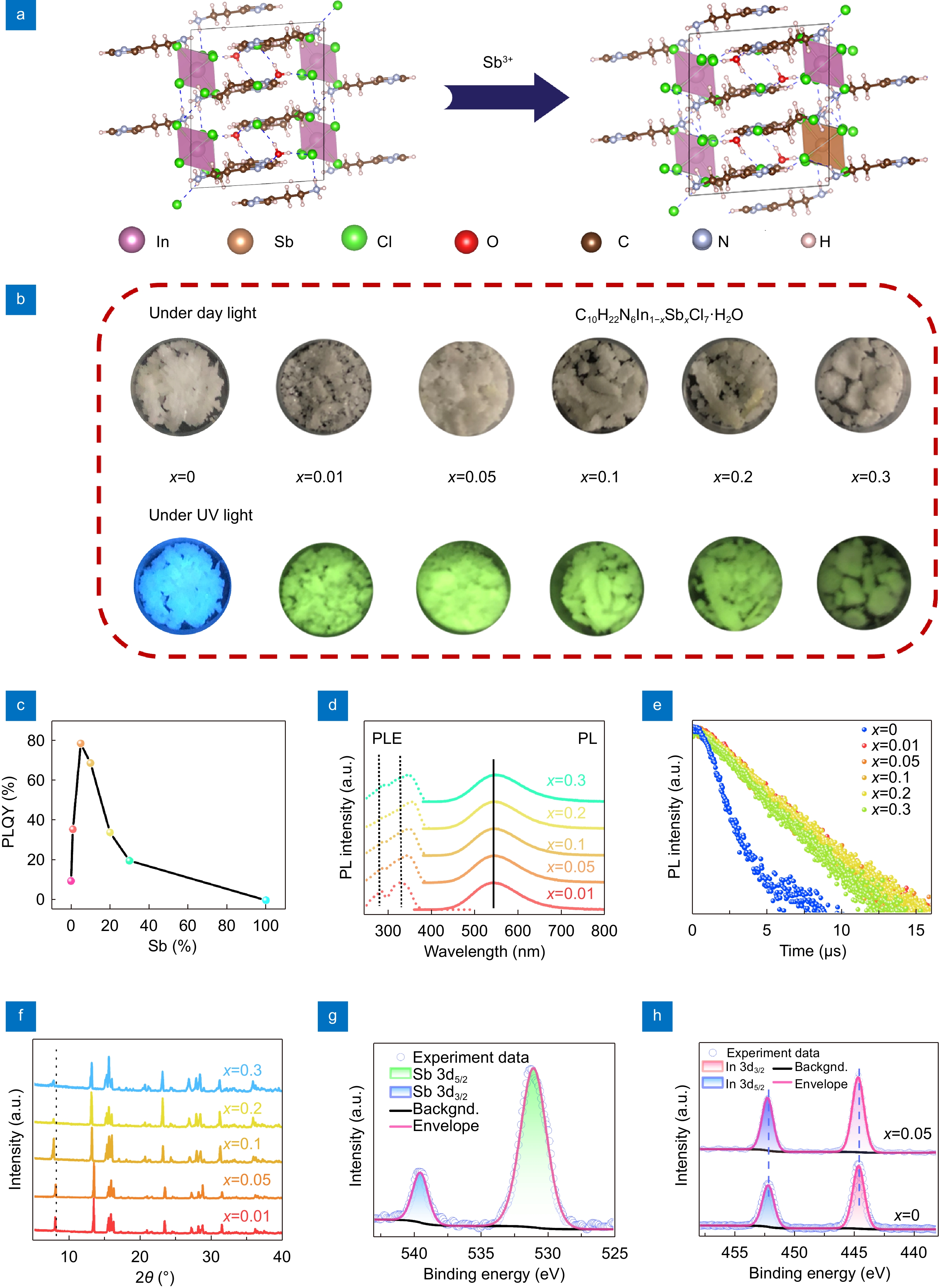(Peer-Reviewed) Luminescence regulation of Sb3+ in 0D hybrid metal halides by hydrogen bond network for optical anti-counterfeiting
Dehai Liang 梁德海 ¹, Saif M. H. Qaid ², Xin Yang 杨鑫 ⁴, Shuangyi Zhao 赵双易 ¹, Binbin Luo 罗彬彬 ³, Wensi Cai 蔡文思 ¹, Qingkai Qian 钱庆凯 ¹, Zhigang Zang 臧志刚 ¹
¹ Key Laboratory of Optoelectronic Technology & Systems (Ministry of Education), Chongqing University, Chongqing 400044, China
中国 重庆 重庆大学光电技术及系统教育部重点实验室
² Department of Physics & Astronomy, College of Sciences, King Saud University, P.O. Box 2455, Riyadh 11451, Saudi Arabia
³ Department of Chemistry and Chemical Engineering, Key Laboratory for Preparation and Application of Ordered Structural Materials of Guangdong Province, Shantou University, Shantou 515063, China
中国 汕头 汕头大学化学化工学院 广东省有序结构材料的制备与应用重点实验室
⁴ Department of Oil, Army Logistics Academy of PLA, Chongqing 401311, China
中国 重庆 中国人民解放军陆军勤务学院 石油系
Opto-Electronic Advances
, 2024-03-20
Abstract
The Sb³⁺ doping strategy has been proven to be an effective way to regulate the band gap and improve the photophysical properties of organic-inorganic hybrid metal halides (OIHMHs). However, the emission of Sb³⁺ ions in OIHMHs is primarily confined to the low energy region, resulting in yellow or red emissions. To date, there are few reports about green emission of Sb³⁺-doped OIHMHs.
Here, we present a novel approach for regulating the luminescence of Sb³⁺+ ions in 0D C₁₀H₂₂N₆InCl₇·H₂O via hydrogen bond network, in which water molecules act as agents for hydrogen bonding. Sb3+-doped C₁₀H₂₂N₆InCl₇·H₂O shows a broadband green emission peaking at 540 nm and a high photoluminescence quantum yield (PLQY) of 80%. It is found that the intense green emission stems from the radiative recombination of the self-trapped excitons (STEs). Upon removal of water molecules with heat, C₁₀H₂₂N₆In₁₋ₓ SbₓCl₇ generates yellow emission, attributed to the breaking of the hydrogen bond network and large structural distortions of excited state.
Once water molecules are adsorbed by C₁₀H₂₂N₆In₁₋ₓ SbₓCl₇, it can subsequently emit green light. This water-induced reversible emission switching is successfully used for optical security and information encryption. Our findings expand the understanding of how the local coordination structure influences the photophysical mechanism in Sb³⁺-doped metal halides and provide a novel method to control the STEs emission.
Flicker minimization in power-saving displays enabled by measurement of difference in flexoelectric coefficients and displacement-current in positive dielectric anisotropy liquid crystals
Junho Jung, HaYoung Jung, GyuRi Choi, HanByeol Park, Sun-Mi Park, Ki-Sun Kwon, Heui-Seok Jin, Dong-Jin Lee, Hoon Jeong, JeongKi Park, Byeong Koo Kim, Seung Hee Lee, MinSu Kim
Opto-Electronic Advances
2025-09-25
Dual-frequency angular-multiplexed fringe projection profilometry with deep learning: breaking hardware limits for ultra-high-speed 3D imaging
Wenwu Chen, Yifan Liu, Shijie Feng, Wei Yin, Jiaming Qian, Yixuan Li, Hang Zhang, Maciej Trusiak, Malgorzata Kujawinska, Qian Chen, Chao Zuo
Opto-Electronic Advances
2025-09-25







